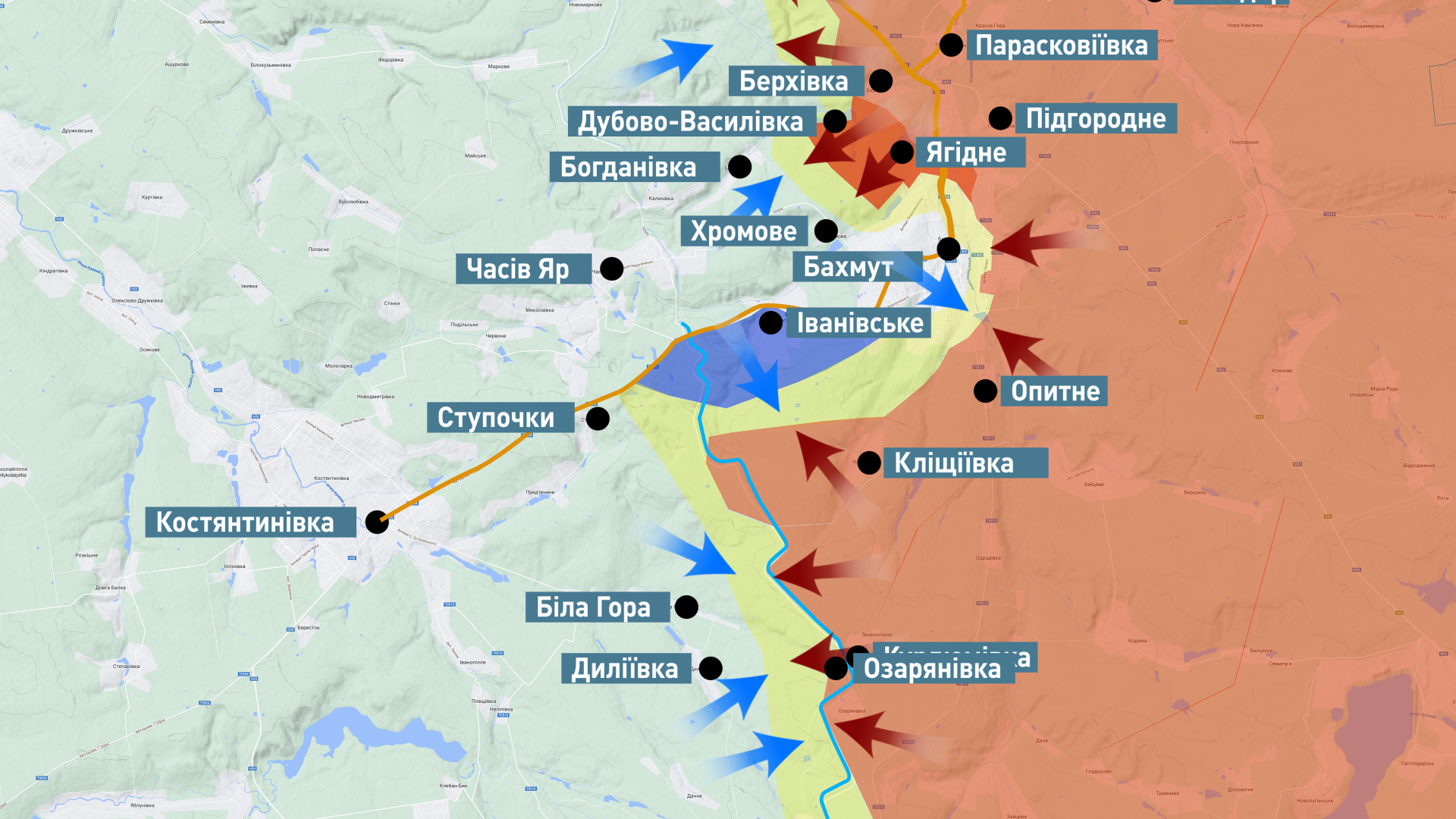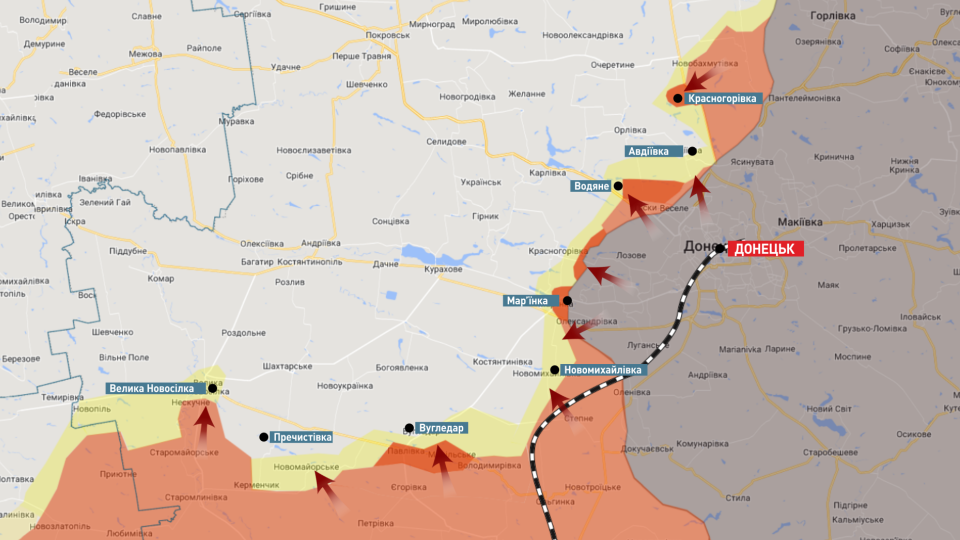
Bakhmut defense and future Ukrainian counteroffensive. Serhiy Zgurets column
Media is overflown with reports and assessments of the Bakhmut situation and the Commander-in-Chief’s decision not to withdraw
Defense of Bakhmut
Why is it important to keep Bakhmut? Military expert Mykhailo Samus recently spoke with me about this topic. He reminded me of media publications from a month ago regarding Russia's plans for a large-scale offensive. At that time, there was concern about a potential offensive on the scale of February 24, 2022. However, we can now see that Russian efforts are concentrated on a few tens of kilometers. This means that from a potential offensive spanning 2 000 km, the Russians have focused their attack in one area. While it is bloody and intense, it is not a large-scale offensive.

The Russian command attempted to deceive us by indicating that their primary attack would be focused on Bakhmut, but in reality, they aimed to deliver the main blow near Vuhledar. But we know what had happened to the Russians there.They suffered significant losses, with units from the 155th Marine Brigade and other Russian Army units destroyed. Approximately 130 armored vehicles, including tanks, were destroyed during the operation.

Then again the focus was on Bakhmut.
He explained why Ukrainian forces are concentrated in Bakhmut to maintain the city. Firstly, if the Ukrainian command decides to continue defending the area, there are opportunities to do so in Bakhmut. If the Ukrainian army leaves the city, it will be withdrawn to the next defensive line, and the cycle will repeat, necessitating the same actions. The logic is simple: if you can practice defense here, there's no need to go somewhere else.
Secondly, Bakhmut has become a city where the Ukrainian army has already won a significant amount of time. The Defense Forces are strategically preparing for the spring campaign, where they will take measures to liberate Ukrainian territories through offensive and counter-offensive operations. The Ukrainian army is currently receiving weapons and preparing units and formations for this purpose. Therefore, the time that the Ukrainian army spends near Bakhmut is extremely valuable and will be crucial in April when the Armed Forces of Ukraine begin practicing their operations.
Prospects of the enemy
Samus discussed the possibility of further enemy actions and offensives. In November-December of last year, there was a need for the Russian army to conduct another big wave of mobilization due to a shortage of reserves. While they have the strength, there are not enough offensive groups prepared to carry out their tasks. Additionally, the upcoming spring off-road period will further reduce troop mobility and the ability to conduct offensive actions. The enemy is already missing the window of opportunity to break through Ukrainian defenses, such as on Vuhledar or Kreminna, and move to Slovyansk and Kramatorsk. Putin has not canceled the political task of taking Donetsk and Luhansk regions, so the Russian army must achieve this to show a strategic victory and sell it as fulfilling the task.
Regarding their prospects, their political objective remains a priority. Samus is certain that the order signed by Gerasimov in January is still in effect. March is expected to be a challenging month until the Ukrainian army takes a proactive approach and asserts its dominance on the battlefield. Only then will the Russians be compelled to alter their tactics. A similar scenario occurred at the Kherson bridgehead when the adversary made the difficult decision to transfer their troops to Donbas, hoping to achieve some success.
Samus anticipates a continuation of hostilities, including potential attacks in the Vuhledar direction, attempts at Kreminna, and an offensive on Bakhmut, which could be a turning point. Soledar, Sievierodonetsk, and Lysychansk were pivotal locations for them. I believe that March will be a critical and challenging month, and it is crucial for the Ukrainian army to prepare and retake their initial positions under favorable conditions.
According to the military expert, the enemy is currently engaging in a high-intensity conflict in the Bakhmut or Vuhledar areas. However, it is unlikely that they can sustain such an operation until 2025 due to limited officer availability and lack of ammunition, as even Prigozhin reports daily on their struggles to obtain sufficient support for his group. The distance between Bakhmut and Vuhledar is only tens of kilometers, not hundreds, indicating that these are tactical actions aimed at changing the situation rather than full-scale operations. While they may be able to infiltrate the operational space, they are not succeeding in their attempts.
The inevitable fall of Russia
When it comes to the economy of Russia, there are various opinions. While some argue that Russia has weathered the storm and is now on the path to recovery, my view is that due to both domestic and international factors, they have skillfully managed their financial and gold-currency reserves to avoid a complete collapse. Nevertheless, they are merely delaying the inevitable, and within the next six months, their economic situation will likely deteriorate.
The critical question is what will happen to Russia after the economic downturn. Many hope that the Putin regime will fall, paving the way for democratic forces to take over. However, I believe that Putin's inability to continue the high-intensity war and the economic failures will force him to withdraw from Ukrainian territories. While he may try to hold on to Crimea and Donbas, he is unlikely to succeed. The only way for Putin to maintain his regime would be to close and isolate the country, creating a super-closed, isolated, fascist regime. This state may persist for up to two decades, after which someone else will replace Putin. It is crucial to ensure that such a regime exists within Russia's borders and not spill over to our territory.
- News













































